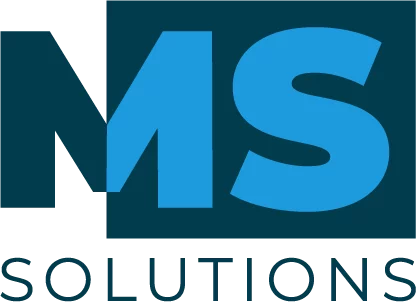Protecting your company’s sensitive data has become more crucial than ever in the complex information management landscape. During the webinar on November 24, we explored in depth the very essence of governance within Microsoft 365. Imagine a world where your confidential files, your financial data and your valuable innovations are under an unwavering digital lock, guaranteeing a access strictly authorized. This is where governance comes into play.
Microsoft 365 offers a range of powerful tools, but their optimization relies on rigorous management and governance. Our exclusive webinar highlighted this pressing need for businesses of all sizes. In this article, we extend this exploration to provide you with in-depth insights.
What is M365 governance? understand the essential foundations
Data governance within Microsoft 365 represents the set of strategies, processes and controls deployed to efficiently manage the services and applications included in this cloud suite. By bringing together various office applications such as Word, Excel, and PowerPoint, communication services such as Outlook and Teams, as well as collaboration tools such as SharePoint, Project for the web and planner, Microsoft 365 offers a varied range of essential services for businesses.
A well-structured governance plan follows a step-by-step methodology, encompassing:
- Taking into account business objectives and processes
- Understanding service settings
- Planned user access management
- Scheduled management of compliance settings
- Planned communications management
- Life cycle organization and governance
In this approach, six key points emerge, forming the pillars of M365 governance :
- User and group management
- Security
- Compliance
- Identity management
- Access management
- Configuration management
But what does this actually mean? M365 governance involves a series of essential actions :
- Supervision of current and future management of the Microsoft 365 ecosystem
- Establishment of rules of use and codes of conduct
- Guidance for the implementation and evolution of M365
- Rigorous data control
- Alignment of tools and their use with business processes
- Facilitating the transition of information technology responsibilities
- Integration of the company’s corporate image
It is crucial to note that M365 governance is not just a software application. Rather, it embodies a holistic framework for effectively managing the various aspects of Microsoft 365, while maintaining security and compliance.
In specific environments such as SharePoint and Teams, governance takes on distinct aspects :
Governance in SharePoint:
- Access control and security
- Content Policies
- Structure and organization
- Lifecycle management
- Training and awareness
Governance in Teams:
- Identity and access management
- Security policy
- Compliance
- Customization and configuration
- Monitoring and reporting
- Integration with other M365 services
Understanding these key aspects of M365 governance is crucial to establishing a robust and secure environment within Microsoft 365. In the remainder of this article, we will explore each aspect in depth to give you in-depth understanding and practical solutions.
Why implement M365 governance? the essential reasons explained
Implementing M365 governance is critically important for a variety of reasons:
- Regulate practices, users and applications: by establishing clear policies, you ensure appropriate use of M365 applications and tools, thereby reducing the risks of misuse or unauthorized access.
- Set rules of conduct: Setting rules and standards helps guide users on how to interact with data and applications, thereby promoting responsible and compliant use.
- To keep the organization in control: governance ensures increased control over data and processes, avoiding potential abuses and maintaining adequate oversight over activities within the M365 ecosystem.
- Because Microsoft won’t do it for you: Although Microsoft offers powerful tools, the responsibility for using them effectively and securely lies with each organization. Governance allows these tools to be customized and controlled according to the specific needs of each company.
- Just because it’s allowed doesn’t mean you want to allow it: even if certain actions are technically possible within Microsoft 365, that doesn’t mean they should be allowed. Governance defines boundaries and permissions to protect sensitive data and maintain business integrity.
In short, M365 governance is much more than just an administrative formality; it represents the foundation on which security, compliance and consistency of practices within Microsoft 365 are based. It is a proactive measure that ensures optimal use of tools and data, thus preserving the value and integrity of the ‘organization.
Who is M365 governance for? a necessity for various organizations
Governance within Microsoft 365 is relevant to a plethora of organizations using this suite of tools:
- For various types of organizations: whether businesses, government agencies, educational institutions or non-profits, M365 governance plays a crucial role in managing data and preserving security.
- Particularly crucial for large companies: in large structures with a large number of users, governance becomes vital. Efficient management of resources and ensuring data security are major concerns, making governance a central pillar of their operation.
This approach is not limited to a single role within organizations, but is aimed at a range of professionals, including:
- Business leaders and decision-makers: They must understand the strategic importance of governance for data protection and compliance.
- IT managers and system administrators: They play a central role in implementing and maintaining governance policies.
- Information security managers and other IT professionals: Their expertise is crucial to establishing effective security protocols.
It is crucial to emphasize that M365 governance is not static; it must be reviewed regularly and proactively to adapt to technological developments, organizational changes and new security requirements. A proactive approach ensures robust and adaptive governance within Microsoft 365.
The most common mistakes in M365 governance: how to avoid the pitfalls
In managing M365 governance, several common mistakes can compromise security and compliance:
- Excessive permissions: Granting excessive permissions can increase security risks. Following the principle of least privilege is crucial to ensure that users have only the rights necessary for their tasks.
- Lack of a strong password policy: Not having strong password policies in place exposes accounts to vulnerabilities. Demanding policies, two-step verification, and user awareness of password security are essential.
- Lack of change tracking: Effective governance requires constant tracking of security changes, permissions, and configurations. Failure to track can create security gaps.
- Failure to comply with compliance policies: Ignoring compliance policies can lead to legal and security issues. Implementing policies that comply with regulations and verifying their application by users are essential.
- Poor management of groups and roles: Inadequate management can lead to security and confidentiality issues. Clearly defining roles and responsibilities, as well as limiting access to resources, is crucial.
- Inappropriate use of collaboration features: Although Microsoft 365 offers powerful collaboration tools, insecure use can compromise data privacy.
- Lack of user training: Uninformed users can make unintentional security mistakes. Regular training on good security practices is essential.
- Violation of retention and deletion policies: Ignoring these policies can lead to compliance issues. Setting adequate retention policies is necessary for proper data management.
Avoiding these errors is crucial to ensuring effective, secure, and compliant governance within the Microsoft 365 environment.
Best practices in M365 governance: ensuring optimal management
For effective governance within Microsoft 365, several best practices can be adopted:
- Understand the environment and its possibilities: A thorough understanding of the features and capabilities of Microsoft 365 is essential for optimal use.
- Agree on collaboration spaces and their purposes: clearly defining workspaces and their purpose promotes targeted and efficient use.
- Create a content lifecycle: establishing processes for creating, modifying, and deleting content ensures consistent management.
- Identify content managers: assign content owners responsible for its maintenance and compliance.
- Determine your priorities: Setting priorities for data security, compliance and accessibility is essential.
- Give yourself a global nomenclature: develop a logical and coherent structure for naming and organizing files and folders.
- Train users: provide regular training on good security practices and the proper use of Microsoft 365 tools.
- Communicate the rules and the why: clearly explain the rules and policies, as well as their reasons, to users to encourage their adherence.
- Adopt an incremental/evolutionary approach: evolve gradually based on the changing needs of the organization and technological advances.
By implementing these best practices, businesses can establish strong and adaptable governance, ensuring optimal and secure use of Microsoft 365.
In short
Governance within Microsoft 365 is more than just a formality: it is the glue that keeps your environment secure, compliant, and efficient. Understanding its intricacies and adopting best practices is essential to avoiding common pitfalls and reaping the full benefits of this powerful suite of tools.
To ensure effective governance, two key solutions stand out:
Solution 1: Microsoft 365 Collaboration Framework Diagnostic provides a comprehensive assessment of M365 groups, including SharePoint Sites, Teams, and associated apps currently used in the admin console.
Solution 2: Implementing robust Microsoft 365 data governance, including access, creation, usage, and compliance policies, is crucial to ensuring secure and compliant use of your data-sensitive assets and data. within Microsoft 365. By combining these solutions with best practices, you establish a solid foundation for efficient governance for your business.
Do not hesitate to contact our team of experts for more information on the subject.




